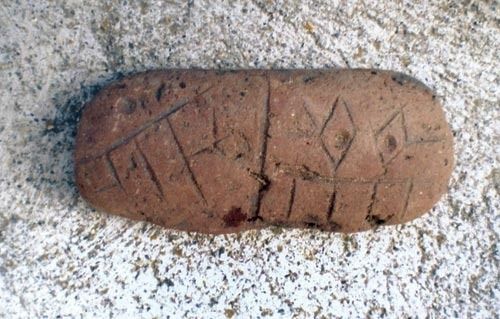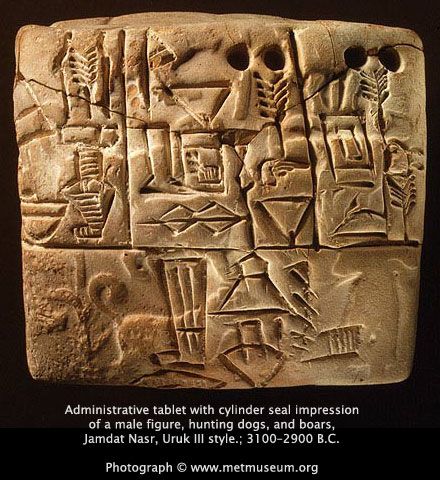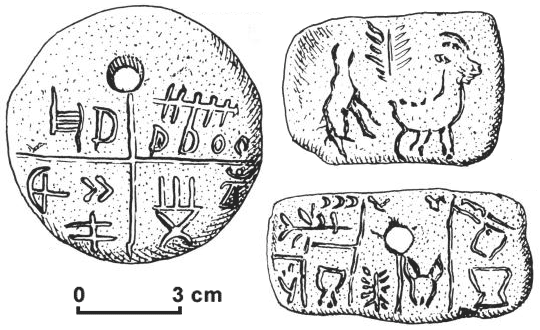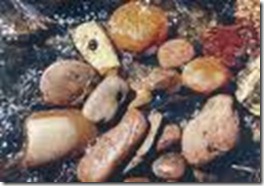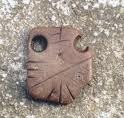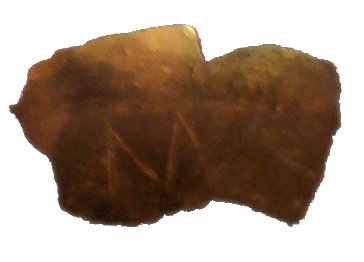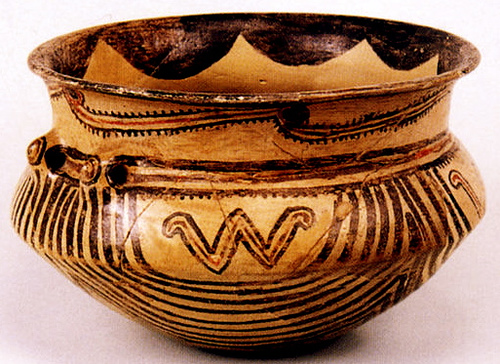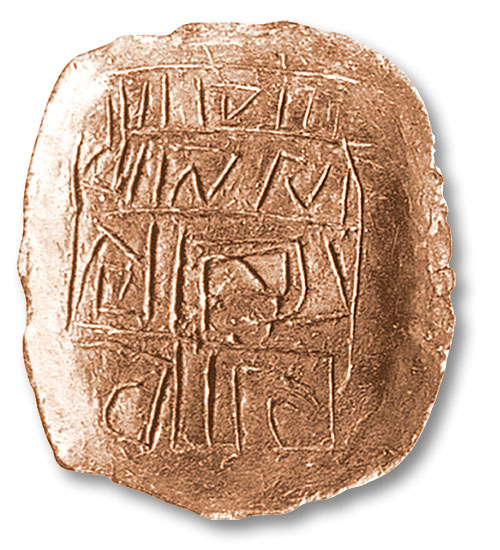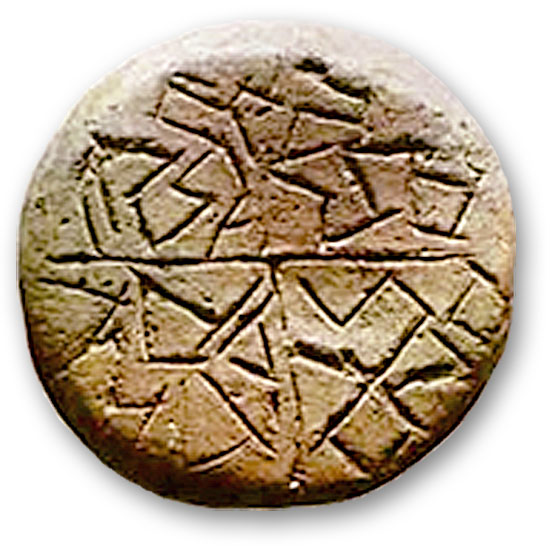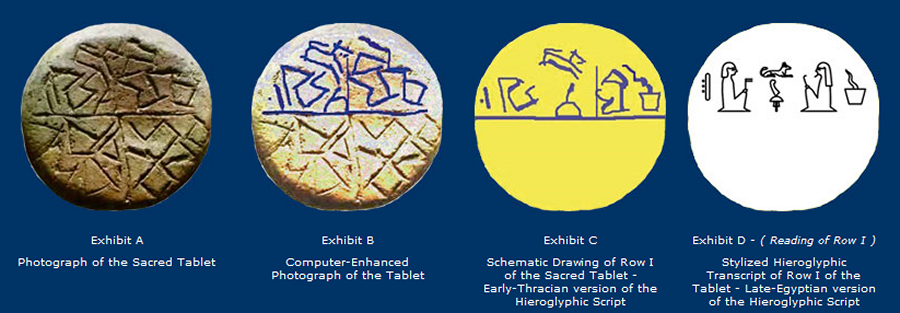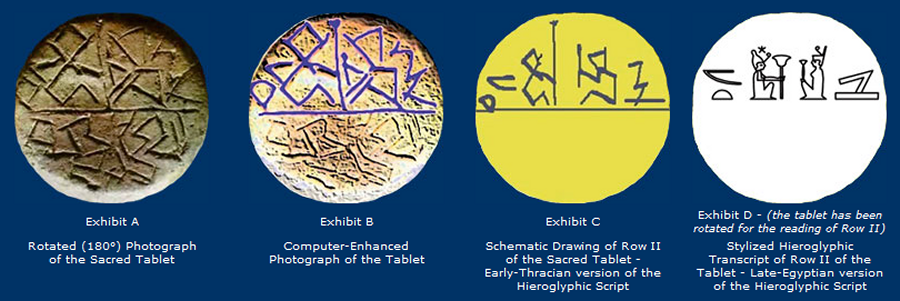|
|
||||||||
|
Romania ..
Originally posted by lisa2012 ATS Post ID 10674495 The tablets from Vadu Rau Romania (120 pieces)
These incredible adventure with the inscribed "stones" in the '80s began when Professor Dumitru Ionita, during a recognition of land held in the city section called Vadu ,Farcasa Rau, has discovered a number of Neolithic objects, such as : weights for fishing nets or loom, polished stone axes,the tablets with inscription etc..I will try to find more photos of these tablets but I think this is pretty much Mind Blowing !!!!!!! Source: Surorile
tablitelor de la Tartaria, descoperite la Vadu Rau
|
||||||||
| Originally posted by lisa2012
ATS
Post ID 10674541
Uruk Tablet Summer from 3000BC
Tartaria Tablets Romania 5500BC:
Vadu Rau Romania Tablets 7000BC:
Now can anyone see any resemblance? Waiting for responses on this one. ..
..
|
||||||||
|
..
Turdash-Vinca Symbols
The symbols are mostly considered as constituting an instance of "proto-writing"; that is, they probably conveyed a message but did not encode language, predating the development of writing proper by more than a millennium. In 1875, archaeological excavations led by the Hungarian archeologist Zs├│fia Torma (1840ÔÇô1899) at Tordos, Hungary (today Turda┼č, Romania) unearthed a cache of objects inscribed with previously unknown symbols. In 1908, a similar cache was found during excavations conducted by Miloje Vasic (1869-1956) in Vin─Źa, a suburb of Belgrade (Serbia), some 120 km from Tordos. Later, more such fragments were found in Banjica, another part of Belgrade. Since, over one hundred and fifty Vin─Źa sites have been identified in Serbia alone, but many, including Vin─Źa itself, have not been fully excavated.[1] Thus, the culture of the whole area is called the Vin─Źa culture, and the script is often called the Vin─Źa-Tordos script.
The discovery of the Tartaria tablets in Romania by Nicolae Vlassa in 1961 reignited the debate. Vlassa believed the inscriptions to be pictograms and the finds were subsequently carbon-dated to before 4000 BCE, thirteen hundred years earlier than the date he expected, and earlier even than the writing systems of the Sumerians and Minoans. To date, more than a thousand fragments with similar inscriptions have been found on various archaeological sites throughout south-eastern Europe, notably in Greece (Dispilio Tablet), Bulgaria, former Yugoslavia, Romania, eastern Hungary, Moldova, and southern Ukraine. Most of the inscriptions are on pottery, with the remainder appearing on whorls (flat cylindrical annuli), figurines, and a small collection of other objects. Over 85% of the inscriptions consist of a single symbol. The symbols themselves consist of a variety of abstract and representative pictograms, including zoomorphic (animal-like) representations, combs or brush patterns and abstract symbols such as swastikas, crosses and chevrons. Other objects include groups of symbols, of which some are arranged in no particularly obvious pattern, with the result that neither the order nor the direction of the signs in these groups is readily determinable. The usage of symbols varies significantly between objects: symbols that appear by themselves tend almost exclusively to appear on pots, while symbols that are grouped with other symbols tend to appear on whorls.
Romanian National History Museum The importance of these findings lies in the fact that the bulk of the Vin─Źa symbols was created in the period between 4500 and 4000 BC, with the ones on the T─ârt─âria clay tablets even dating back to around 5300 BC.[2] This means that the Vin─Źa finds predate the proto-Sumerian pictographic script from Uruk (modern Iraq), which is usually considered as the oldest known script, by more than a thousand years. Analyses of the symbols showed that they have little similarity with Near Eastern writing, leading to the view that these symbols and the Sumerian script probably arose independently. There are, however, some similarities between the Vin─Źa signs and other Neolithic symbologies found elsewhere, as far afield as Egypt, Crete and even China, but scholars have suggested that such signs were produced by a convergent development of proto-writing which evolved independently in a number of societies. Although a large number of symbols are known, most artifacts contain so few symbols that they are very unlikely to represent a complete text. Possibly the only exception is a stone found near Sitovo in Bulgaria, the dating of which is disputed; regardless, the stone has only around 50 symbols. It is unknown which language used the symbols, or indeed whether they stand for a language in the first place. SOURCE: Wikipedia Old European Script |
||||||||
|
The Vinca Signs Proto-writing known as the Vinca signs. The tablets are dated to the 5th millennium BC and are currently preserved in the Vratsa Archeological Museum of Bulgaria.
The tablets date back to the 4th millennium B.C. They were found some 400 kilometres west of Lake Town. There are several dozens of them. Something is presumably written on their upper side. On their backside there seems to be a symbol resembling a sun wheel. Who and when will be able to decipher these tablets?
The Karanovo Tablet
The Sacred Tablet from the village
of Karanovo (Nova Zagora District, Bulgaria)
The tablet contains two rows of pictographic signs, separated by a horizontal line, each one of which, is quite clearly visible upon the tabletÔÇÖs photograph (exhibit A). The same are presented in computer enhanced versions and in schematic drawings (each), respectively in exhibits B and exhibits C. (N.B. If there have been any other additional signs on the artifact, that are presently not visible or discernable, these have not been taken into consideration for the purposes of our present reading of the text). Please, note that the signs engraved under the horizontal line are inverted (i.e. head-down) and the tablet needs to be turned 180┬░ around (to full diametrical opposition), so that the reading of the second row of text, (under the horizontal line), can be accomplished. After the above ÔÇťrotationÔÇŁ, the second row of the engraved pictograms is presented below in its ÔÇťcorrectedÔÇŁ upright position, for easier character recognition.
Now, all of the above identified pictographic signs (in both row I and row II) look exactly like the Hieroglyphic Inscriptions presented in the exhibits D, when they are transcribed, using the stylized later version of the pictographic script, known to us from the pyramid texts of Ancient Egypt, rendered here in its computerized calligraphic print.
Upon comparison, it becomes evident that each of the rows of text, displayed on exhibits B, exhibits C and exhibits D, is absolutely one and the same identical text, and that the two calligraphic styles (respectively - the early-Thracian, and the late-Egyptian), represent one and the same identical pictographic script, which has come to us down the ages, in its condition and appearance as seen on Exhibits A. The evident conclusions, just like in the previous case, are as follows:
The one who has been initiated, has exchanged his Crown of the Lower Realm, for the High Crown of the Upper Realm, and has passed from Falsehood into the Truth, ruling with the high Priestly Scepter (of Truth and Justice) now firmly in his hand. {In keeping with Rosicrucian traditions} (N.B. Please, note that because of the tabletÔÇÖs ÔÇťrotationÔÇŁ (180┬░) so that the second row of the text could be in its ÔÇťcorrectedÔÇŁ upright position, (for easier character recognition), the deliberate original positioning of the pictogram of Falsehood (Injustice) right under the earthly (lower) realm, and of Truth (Justice) right under the fiery (upper) realm (so intended by the ancient engraver of the tablet), has now, in our schematic presentation and reading, been technically altered!) If we are to put the above text into the everyday lingo of our modern time, it would sound something like this:
More detailed information about The Sacred Tablet from the village of Karanovo and its reading is, of course, found in the First Book of this series ÔÇô The Thracian Script Decoded - I, where a more thorough analysis of the text of the Sacred Tablet and its meaning was introduced. The tablets from Gradeshnitsa and Karanovo, however, are definitely not the only existing artifacts of that nature found on the territory of Ancient Thrace! There are a number of other similar tablets (plates) well known to archaeologists, which date from relatively the same historical period (of 5000 to 4000 BCE) and were found within the borders of the same extended geographical region. Without going into all the technical archaeological details of such finds in this predominantly linguistic research work, it will suffice for us to state, that our analysis conclusively demonstrates, that the tablets found to the north of Gradeshnitsa (Bulgaria) -in the region of Tartaria (modern day Romania), display pictograms of the same Thracian pictographic script, identical to the one already decoded by using the Guide Method, upon the Tablets from Gradeshnitsa and Karanovo (Bulgaria). See also The Amulet from Tartaria and Other Thracian artifacts containing the Thracian Script * At the time of the First Edition of this book, the original Tablet of Karanovo was in the keeping of the National Museum of Archeology, in the city of Sofia, Bulgaria. SOURCE: Institutet-science.com/en/karanovoe The DispilioTablet Ainu script: ŃéóŃéĄŃâî ŃéĄŃé┐Ńé», aynu itak The Dispilio Tablet (also known as the Dispilio Scripture or the Dispilio Disk) is a wooden tablet bearing inscribed markings (charagmata), unearthed during George Hourmouziadis's excavations of Dispilio in Greece and Carbon 14-dated to about 7300 years b.p. (5260 BC). It was discovered in 1993 in a Neolithic lakeshore settlement that occupied an artificial island near the modern village of Dispilio on Lake Kastoria in Kastoria Prefecture, Greece.
The importance of these findings lies in the fact that the oldest of them are dated around 4000 BC, around a thousand years before the proto-Sumerian pictographic script from Uruk (modern Iraq), which is usually considered as the oldest known script. Analyses of the symbols showed that they had little similarity with Near Eastern writing, leading to the view that they probably arose independently of the Sumerian civilization. There are some similarities between the symbols and other Neolithic symbologies found elsewhere, as far afield as Egypt, Crete and even China. However, Chinese scholars have suggested that such signs were produced by a convergent development of what might be called a precursor to writing which evolved independently in a number of societies.
Source: Dispilio_Tablet
|
||||||||
Linear A scrit found in Bulgaria?
18 May 2005, Ancient tablets found in South Bulgaria are written in the oldest European script found ever, German scientists say. The tablets, unearthed near the Southern town of Kardzhali, are nearly 7,000 years old, and bear the ancient script of the Cretan (Minoan) civilization, according to scientists from the University of Heidelberg, who examined the foundings. This is the Cretan writing, also known as Linear A script, which dates back to XV-XIV century B.C. The discovery proves the theory of the Bulgarian archaeologists that the script on the foundings is one of the oldest known to humankind, the archaeologist Nikolay Ovcharov announced Wednesday. Ovcharov, who is heading the archaeological expedition in the ancient Perperikon complex near Kardzhali, called the discovery ÔÇťrevolutionaryÔÇŁ. It throws a completely different light on BulgariaÔÇÖs history, he said in an interview for the National Television. |
||||||||
| FAIR USE NOTICE: This page contains copyrighted material the use of which has not been specifically authorized by the copyright owner. Pegasus Research Consortium distributes this material without profit to those who have expressed a prior interest in receiving the included information for research and educational purposes. We believe this constitutes a fair use of any such copyrighted material as provided for in 17 U.S.C ┬ž 107. If you wish to use copyrighted material from this site for purposes of your own that go beyond fair use, you must obtain permission from the copyright owner. | ||||||||
|
|
